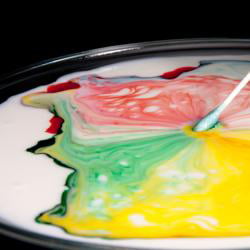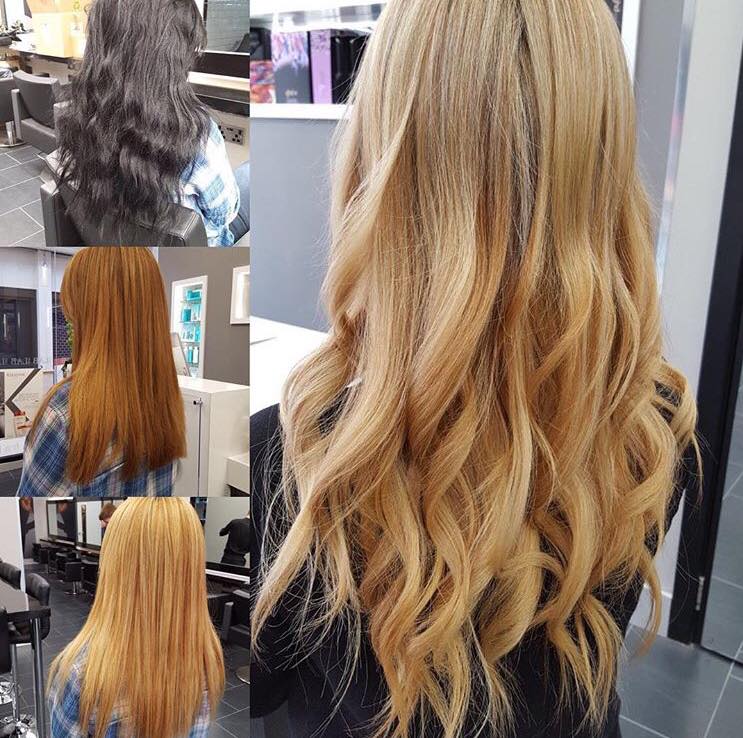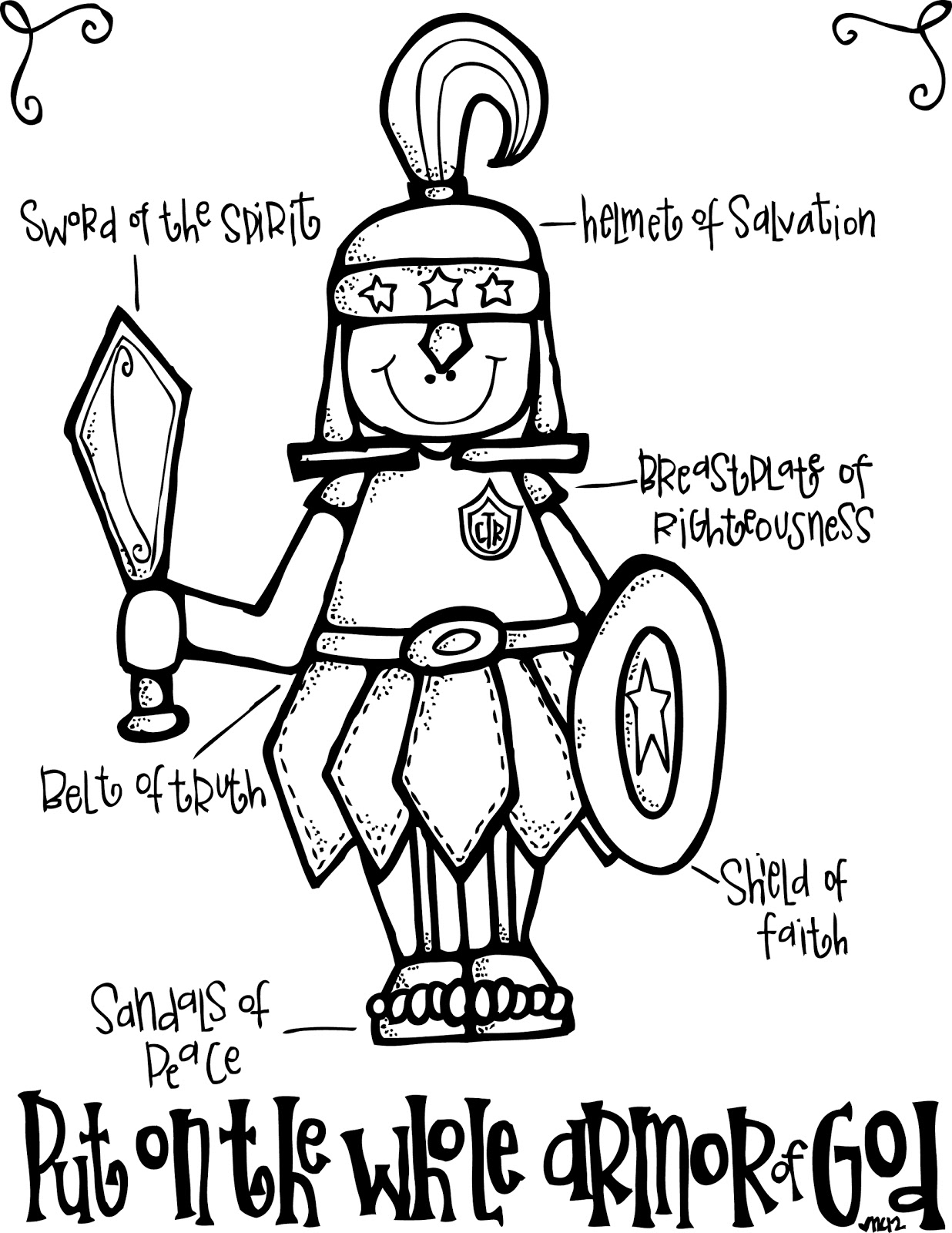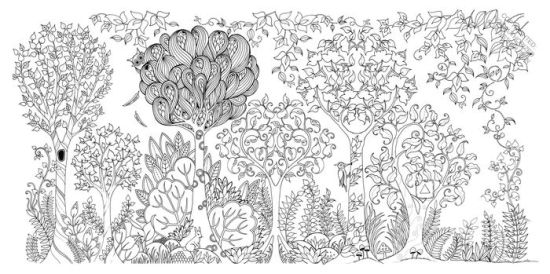
We will place the milk in a shallow dish so that it completely covers the bottom of the dish. The soap and food coloring will now start interacting. You need to try this magic milk experiment using just milk, food coloring and dish soap. Liquid soap wrecks the surface tension by breaking the cohesive bonds between water molecules and allowing the colors to zing throughout the milk. This is the time that we should always let youngsters be youngsters.

Write your hypothesis before you test it.
Do not drink the milk once it is used for this activity! Start by pouring your milk into a baking dish or another flat bottom surface. In this experiment, we needed a bowl, milk, food coloring (represents germs), a toothpick, and soap. How will soap change the colors of food coloring in milk? Add 4 drops of food coloring in a diamond pattern, about an inch away from the center of the plate. When the soap touches the milk, the fats separate from the water and the food coloring pops and swirls around. The quick and easy way to do magic milk is to take your milk, whatever you have in your fridge should work (as we proved with our science fair project below), then you just need a pie plate or shallow dish, dish soap and food coloring. If you have leftover milk, try our milk and vinegar plastic experiment. The science behind the fun. When food color is added to milk, it floats because it is less dense than milk. Liquid soap wrecks the surface tension by breaking the cohesive bonds between water molecules and allowing the colors to zing throughout the milk. Pour the milk into the plate (milk with more fat content is better). The detergent lowers the surface tension of the liquid so that the food coloring is free to flow throughout the milk.
The science behind color changing milk as we saw in the magic milk experiment , soap breaks up the minerals, proteins, and fats in the milk. For this experiment you'll need milk, food coloring, dish soap, and cotton swabs. The second effect at work here has to do with the. Place a few drops of food coloring, in various colors, randomly throughout the milk. If you add a drop of detergent to milk and food coloring, the dye will form a swirl of colors.

The science behind color changing milk as we saw in the magic milk experiment , soap breaks up the minerals, proteins, and fats in the milk.
The drops of food coloring floating on the surface tend to stay put. In this experiment, we needed a bowl, milk, food coloring (represents germs), a toothpick, and soap. Next, drop a few drops of food coloring in a rainbow pattern on the milk. Science experiment for 2 8yr olds make a color explosion in. milk and food coloring experiment. For this experiment you'll need milk, food coloring, dish soap, and cotton swabs. Not only is this a cool science experiment, but it is also a beautiful work of art! This experiment shows us how the fats and water in milk interact with the dish soap. Watch the video at the beginning of the article for step by step instructions or continue reading. We dipped our toothpicks in dish soap and touched our colors. Observe what happens to the surface of the milk. Dish soap what you will do: Do not drink the milk once it is used for this activity!
Watch science magic happen when you combine dish soap with milk and food coloring ben spicer , digital journalist published: It's exactly the stage your little youngsters are going by way of right now. You don't need a lot of milk just to cover the bottom and then some. How will soap change the colors of food coloring in milk? Imagine that surface of liquids is a stretched elastic skin, like the rubber on a balloon full of air.
We used neon food coloring for this experiment (pink, purple, green, and blue).
Repeat the experiment using water in place of milk. This causes the colored milk to spread out like a flood over the surface of the milk. Watch these food coloring burst and stream before your eyes. The fat in the milk is what makes this experiment work), then food coloring, then finally dish soap. Pour milk into a shallow dish or pan. We filled a bowl with milk. If you add a drop of detergent to milk and food coloring, the dye will form a swirl of colors. Watch what happens to the food color when you touch dishwashing liquid to the full cream milk. Carefully cover one end of a cotton swab with liquid dish. Add few drops of different food colors. The food coloring tends to get a little lost if there is a lot of milk and you won't see the pretty swirls as well. This means they're not mixed in, just hanging in the milk. Start by pouring your milk into a baking dish or another flat bottom surface.
Get Experiment Milk And Food Coloring PNG. If you add a drop of detergent to milk and food coloring, the dye will form a swirl of colors. Squeeze food coloring in the middle of the plate on the milk's surface. July 22, 2020 10:34 am Light refraction with a water bottle. Most of the milk food coloring and dish soap experiment actually supply the power for the kid to run over the floor utilizing pens or crayons.





